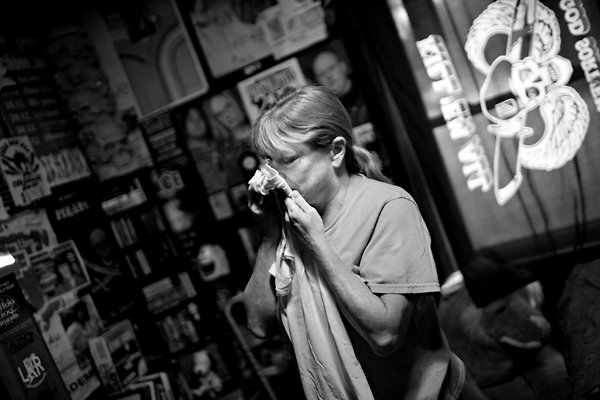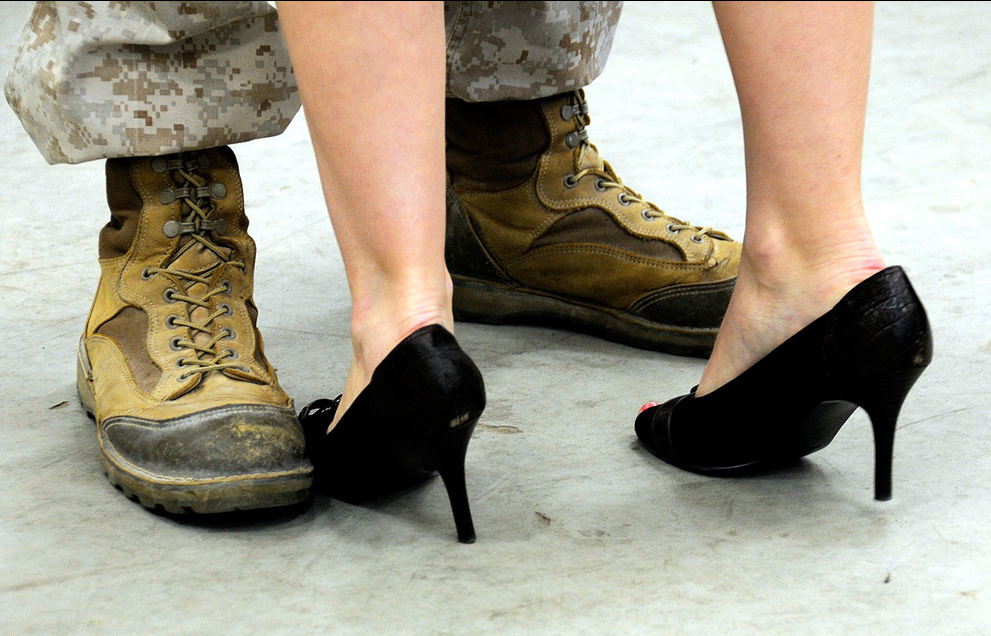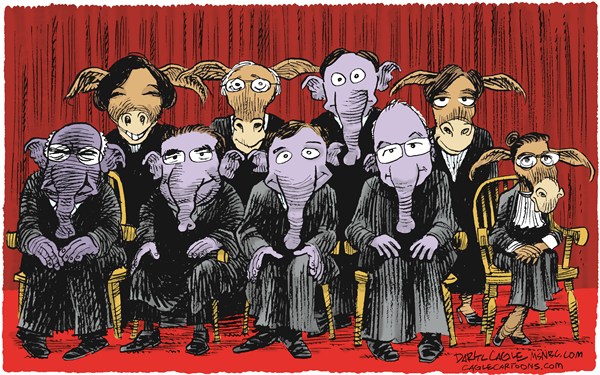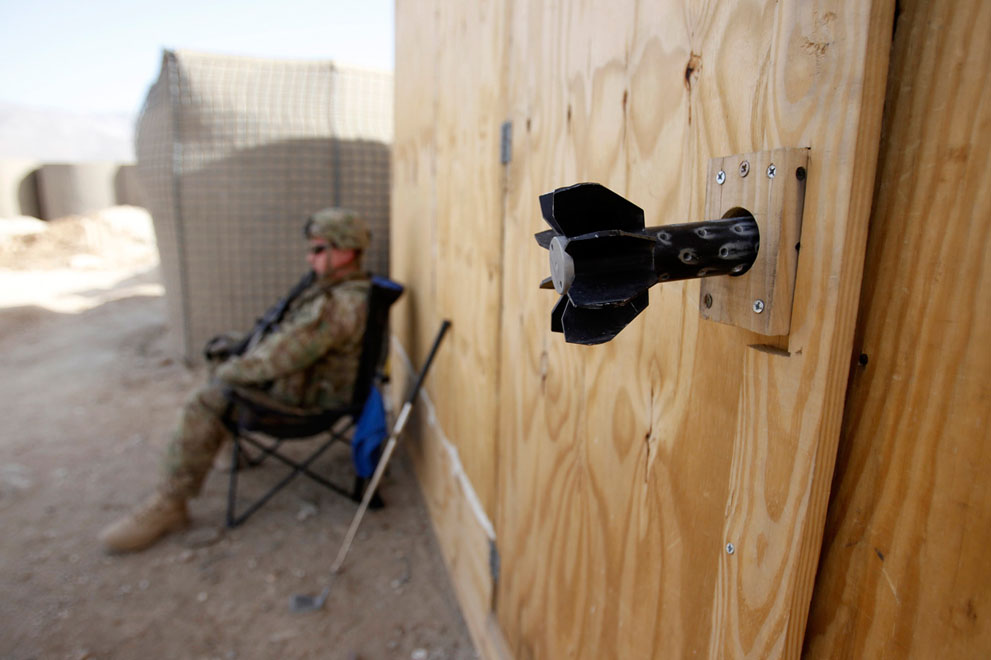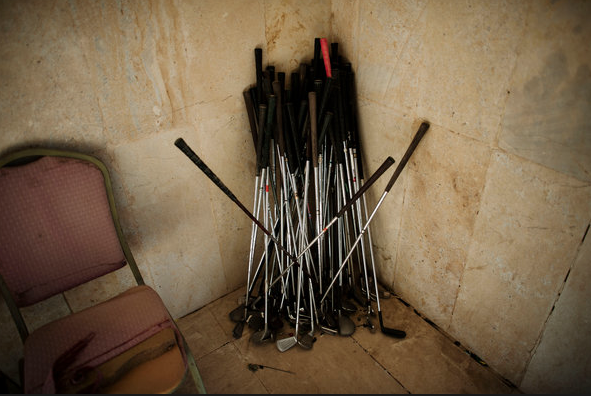All art relies on conventions and public arts especially so. Shared assumptions and known patterns are necessary for artists and audiences to connect at all, while they also provide a basis both for more nuanced communication and for innovation. Mass audiences are particularly dependent on conventional forms for the obvious reason that they have to span enormous differences in education, experience, and perspective. Whether watching TV, going to the movies, reading a who done it, or looking at the photographs in the newspaper, you can expect to see things you’ve already seen many times before. This character, that plot, another government official or another demonstrator. Been there, done that, but what else is there to do? Even so, those writing the stories and taking the pictures find a way to capture the event–and the audience–to articulate some important idea or emotion that can draw people together.
A soldier and his wife share a last tender moment before he ships out for a year long deployment in Afghanistan. I don’t have to do a close analysis of this photo: you know what it means. Heartbreakingly tender, her caress will not be felt again for a long time–if ever. Her hands have to slip away, as if gravity itself were working against them, and she will know only emptiness in their place. The delicate, intelligent tracery of her fingers can’t protect the head and neck that already seem exposed, vulnerable, all too susceptible to the unexpected. As private life gives way to public service, coupling can be undone. Thus, the image is both ideological and critical: citizenship is militarized and heteronormative while family and state mutually care for one another, but everything shared might be sundered and happiness lost to another sacrifice for a purpose that, like their faces, remains unknown.
The departure of the troops is a stock event within the conventional narrative of military service. (That narrative runs visually from the recruiting poster to the war memorial, but that’s a topic for another day.) Likewise, the kiss is a familiar part of private life, from the first kiss to the wedding kiss and beyond. Here the photographer has artfully captured the pathos of a private moment in a necessarily public space, and the scene is both instantly recognizable and yet resonant with emotion. Just like this photograph from 2007:
Let me be very clear: I am not criticizing either photographer. The later photo very likely was taken with no knowledge of the first, and both are beautiful works of public art. Each evokes the same pathos, relays the same obligations and ideologies, exposes the same conflicts and contradictions, and invites the viewer to a range of responses from direct identification to critical reflection. A few differences remain, but that is not my point. Instead, the pairing reveals two facts of public life: There is never only one photo, and this war has gone on too damn long.
The first point is simple, but bears repeating (one might say). There is never one photo, because any photo is in part a repetition of prior images. That’s why you can recognize it and respond to it reliably. Despite the ability of the photograph to record a unique conjunction of time and space, photojournalism remains performative: that is, it displays patterned behavior and engages people in social relationships. Its purpose is not singularity or even artistic uniqueness, but rather communication, which will have to rely on things taken for granted and held in common. Indeed, to appreciate the photographer’s skill, one has to first understand how difficult it is to even reproduce the convention well, much less find some variation on a theme to achieve a distinctive capacity for thought, feeling, and connection. Photography is repetitive because life itself is repetitive, and any cultural or political work has to begin there.
But not all patterns are the same. There is a kiss, and then there might be a lifetime together. There is war, and then there is endless war. One photo is like another five years later because one deployment is like another five years later. Five years of lives shattered and treasure lost forever, and for what? Some things, it seems, never change.
Photographs by Bill Tiernan/The Virginian-Pilot/Associated Press and Mike Morones/Associated Press. For another variant, see this post.


